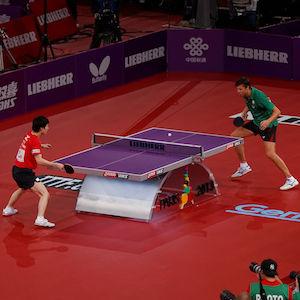Left-handed people are a bit of an anomaly. Relatively speaking, there aren't many of them, yet they've been around for thousands of years.
If there was a solid evolutionary advantage to being left-handed, we would expect the frequency of left-handedness to increase in the population. But that isn't occurring. Instead, we observe a low but persistent prevalence of left-handedness, just around 8% to 10%. One explanation is the notion of negative frequency-dependent selection, which means that the trait is beneficial only if it remains rare.
To shed light on this hypothesis, sport scientist Florian Loffing from the University of Oldenburg in Germany examined the prevalence of left-handedness among elite athletes in various sports.
It was already known that left-handers have some sort of advantage in sports in which competitors interact directly (e.g., in baseball but not in darts). The likely explanation is that players have adapted to the behaviors of right-handers, so it is much more difficult to anticipate the actions of a left-hander.
However, this pattern isn't true for all sports in which competitors battle directly. For example, there isn't a substantially higher percentage of left-handers in tennis. Why? Dr. Loffing believes another factor comes into play: Time pressure. In sports in which competitors must make split-second decisions, he believes left-handers have an advantage.
 To test his hypothesis, he examined the prevalence of left-handers among the elite athletes in six sports: baseball, cricket, table tennis, badminton, tennis, and squash. (These six sports were chosen because they are all similar; namely, they require a person with some sort of tool to hit a ball.)
To test his hypothesis, he examined the prevalence of left-handers among the elite athletes in six sports: baseball, cricket, table tennis, badminton, tennis, and squash. (These six sports were chosen because they are all similar; namely, they require a person with some sort of tool to hit a ball.)
The figure on the right depicts Dr. Loffing's main findings. On the X-axis is time pressure, defined as the length of time in which one competitor must interact with another. For baseball (pink line on the left), the time from when the ball is thrown by the pitcher to when the ball is hit by the batter is roughly 400 milliseconds (0.4 seconds). In comparison, the time pressure is a slothful 1400 milliseconds seconds (1.4 seconds) for squash.
Among elite athletes, Dr. Loffing found that left-handedness was much more prevalent in sports with a high time pressure (baseball, cricket, table tennis) than in those with a relatively low time pressure (badminton, tennis, squash). Overall, he found that left-handers were roughly two-and-a-half times more common among high time pressure sports than low time pressure sports.
Likely, none of this comes as a surprise to Sandy Koufax.
Source: Florian Loffing. "Left-handedness and time pressure in elite interactive ball games." Biol Lett 13 (11): 20170446. Published: 22-Nov-2017. DOI: 10.1098/rsbl.2017.0446




